Category: Medical Document Translation
What is a Professional Language Partner, and When Do You Need One?
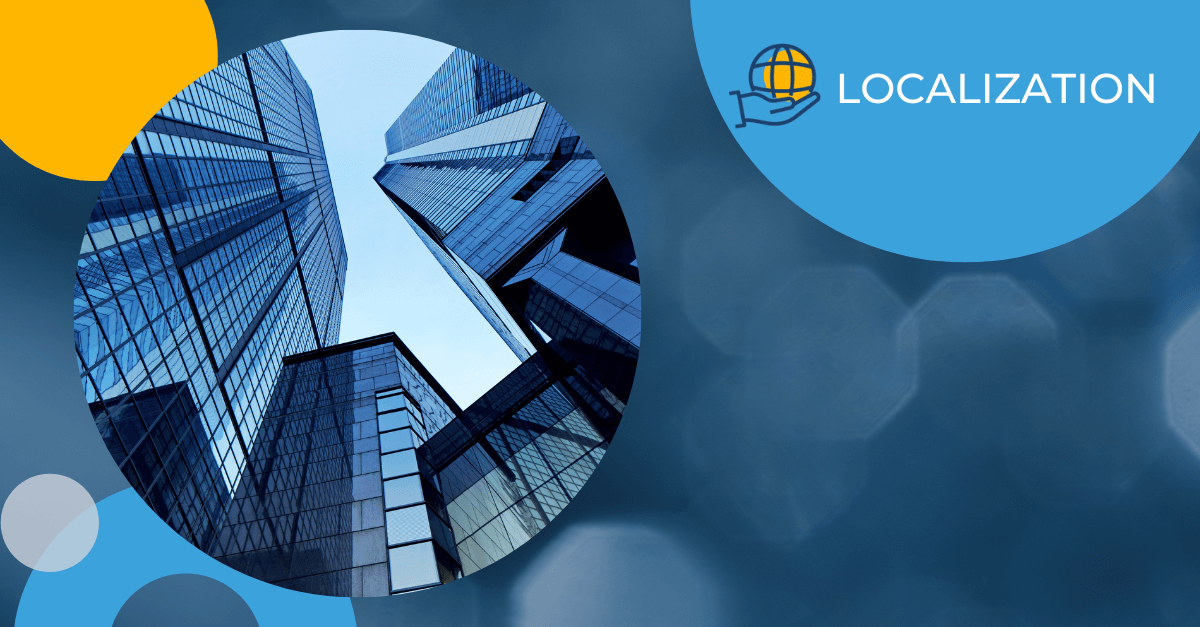
Understanding a Professional Language Partner
In an increasingly interconnected world, effective communication across languages and cultures is not just advantageous but essential for businesses aiming to thrive globally. A Professional Language Partner (PLP) plays a pivotal role in enabling this seamless communication by offering a spectrum of specialized language services. From translation and localization to interpretation and cultural adaptation, PLPs ensure that businesses can convey their messages accurately and resonate with diverse audiences worldwide.
When Should You Engage a Professional Language Partner?
Recognizing the right time to engage a Professional Language Partner is crucial for businesses operating in international markets or diverse environments. Here are scenarios where a PLP’s expertise is particularly valuable:
- Global Market Expansion: A PLP ensures that your content resonates with local audiences through accurate localization when entering new international markets.
- Regulatory Compliance: Accurate translations are essential for compliance with local regulations in legal, healthcare, and finance industries.
- Multilingual Customer Support: A PLP provides support in multiple languages, enhancing customer satisfaction and loyalty.
- International Events: Professional interpretation services facilitate smooth communication for global conferences and meetings.
- Technical and Specialized Content: Translating complex materials like technical manuals or legal documents requires specialized knowledge to ensure precision.
To fully benefit from these scenarios, it’s important to choose a PLP that meets your specific needs and standards.
Key Factors to Consider When Choosing a Professional Language Partner
Selecting the right PLP is essential for ensuring effective communication and high-quality results. Consider these factors when making your choice:
- Industry Expertise and Specialization: Choose a PLP with experience in your specific industry or content type to ensure accuracy and relevance.
- Quality Assurance Processes: Ensure the PLP adheres to rigorous quality control standards and holds its processes to certification standards such as ISO 9001, 13485, and 17100.
- Advanced Technology Integration: Opt for a PLP that uses technology like Translation Memory (TM), Machine Translation (MT), and Terminology Management to enhance efficiency and consistency.
- Global Translator Network: A broad network of native-speaking translators ensures accurate adaptation for different regions.
- Reputation and Client References: Check reviews, case studies, and testimonials to assess the provider’s reliability and performance.
Understanding these factors will help you make an informed decision, but it’s equally important to understand the distinctions between translation and localization to tailor your approach effectively.
Translation vs. Localization: Key Differences and Applications
The PLP you approach will have technical jargon like translation and localization, but what does that mean? Understanding the difference between translation and localization is crucial for effective international communication:
Translation involves converting text from one language to another, focusing on preserving the original meaning and context. For instance, translating a user manual from English to Spanish ensures that the instructions are comprehensible to Spanish-speaking users.
Translation is ideal for straightforward text conversion, such as legal documents, technical manuals, or scientific articles, where minimal cultural adaptation is required.
Localization goes beyond translation by adapting content to fit the cultural, regulatory, and linguistic norms of the target audience. This can include changing date formats, units of measurement, idiomatic expressions, and cultural references. For example, localizing a marketing campaign for a specific country involves adjusting images, slogans, and product names to align with local preferences.
Localization is essential for content that interacts directly with the target audience’s cultural norms, such as websites, software, marketing materials, and multimedia content.
Knowing whether your needs align more with translation or localization helps determine the right moment to engage a Professional Language Partner for your specific translation services.
Optimal Timing to Approach a Professional Language Partner for Translation
Timing is crucial when engaging a PLP for translation services. Here’s when you should consider reaching out:
- During Project Planning: Early engagement helps plan and integrate translation needs into the project workflow. This approach ensures translation is a core part of the project, not an afterthought.
- At Product Development: When developing new products for global markets, incorporating translation from the start aligns product features with local requirements and regulations.
- Pre-Launch Phase: Before launching a product or service in a new market, having translated and localized content ready is critical for a successful introduction.
- For Regulatory Filings: In industries like pharmaceuticals, legal, and finance, translation is often required for regulatory submissions and compliance documents.
By strategically timing your engagement with a professional language partner, you can ensure a smoother process and better results. To maximize these benefits, consider partnering with a trusted provider like Morningside.
Partner with Morningside for Your Language Solutions
Effective global communication demands more than just translation—it requires expertise, precision, and cultural sensitivity. As you navigate the complexities of international markets, partnering with a reliable PLP is essential.
Morningside, a Questel Company, equips the world’s leading organizations with accurate, high-quality, professional translation services. We specialize in highly regulated industries, including legal, life sciences, corporate compliance, and IP. We help your ideas reach new markets and audiences while allowing you to do more with your budget. Our global network of 8,000+ vetted translators includes subject matter experts (SMEs) in various technical fields and practice areas. Morningside is supported by industry-leading technology and a quality management system certified to the latest ISO 9001, 13485, and 17100 standards. We translate complex materials into 200+ languages for Global 500 companies, international law firms, and regulatory bodies.
Ready to expand your reach? Contact Morningside today to discover how we can support your global communication needs.
Get the latest insights delivered to your inbox
5 Essential Strategies to Streamline your Translation Process
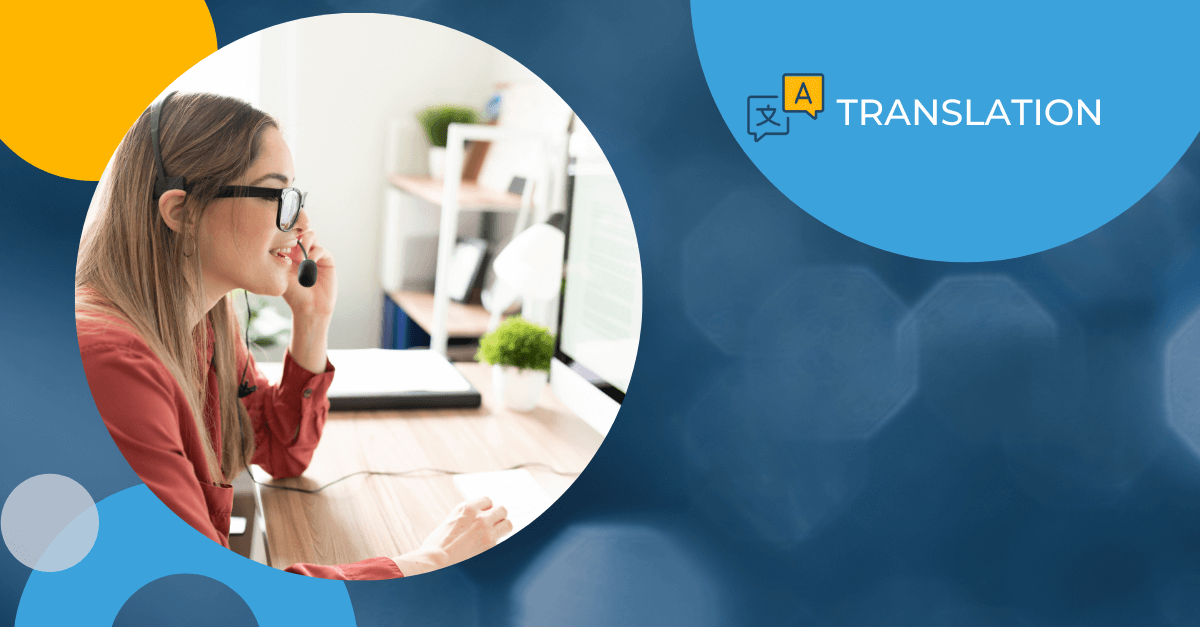
In today’s globalized market, the accuracy and quality of your translations can make or break your brand’s reputation. Whether expanding into a new territory or refining your messaging for diverse audiences, precision in document translation is not merely a box to check but a critical component of your market strategy. A flawless translation ensures that your message resonates, maintains the professionalism of your brand, and paves the way for successful international expansion.
We understand the complexities you face as you prepare to enter new markets. That’s why we’ve compiled essential strategies to streamline your translation process and avoid common pitfalls. Implementing these steps will enhance the quality of your translations, reduce costs, and expedite your market entry.
Here are five steps you can take to ensure your translation process runs smoothly.
1. Provide Enough Time
Time is everything, and whether you are tackling document translation, patent translation, medical translation, or website localization, you must give yourself enough time to perfect it. You want to ensure that the translator or translation company has enough time to thoroughly research the subject matter, prepare the translation, and revise and proofread until the final draft is perfect.
Collaboration is key. The more time you have with your translator, the more likely you’ll be on the same page. Effective teamwork and communication are key to localization and translation success.
Tip: If you know that you will need a translation and you want to contact a professional translation company, speak with them as early as possible so that they can build a custom workflow for your project and find the ideal translator.
2. Create a Translation Glossary and Style Guide
A translation glossary and style guide are helpful cheat sheets for linguists to understand your company better. A translation glossary includes the company’s “lingo,” which should stay consistent throughout, and words that should not be translated, such as product names. A style guide describes how a company should be presented visually and textually, as well as the overall style and tone. In short, it identifies those branding elements that must remain, no matter the locale. A translation glossary and style guide for linguists can help ensure consistency. Without this, words and phrases can be translated in multiple ways across different languages, meaning more time is spent revising translations to create consistency. A glossary and style guide can help with consistency reduce the time it takes to complete each document translation, and cut costs.
3. Don’t Use Multiple Linguists
You might think that using many linguists for large projects will speed up the process, but it could have a negative impact on the overall quality and cohesion of the project. Why is that? The more linguists involved, the more prone you’ll be to inconsistencies in the translation. Beyond each linguist’s style and tone, many words have multiple translations that could fit in a given language, and consistency is critical when delivering a message and building a brand. This is especially true if you want to keep with a specific and notable brand image or content style used in the past. The same also applies to your proofreader – give one person enough time instead of forcing the issue with multiple people.
4. Provide All of the Details
The more information you can provide to your translator or translation company, the better. Including more details in the translation also allows the service to choose a translator with expertise in that field more accurately.
When you approach your LSP, you should consider providing your project’s scope, purpose and audience, context and any reference materials, quality expectations, and project timeline.
Providing these details helps the translation provider understand your needs thoroughly and deliver a translation that meets your specific requirements. This comprehensive briefing ensures quality and fosters a more collaborative and efficient translation process.
5. Use Translation Memory Tools
Translation memory tools can store segments, such as sentences, titles, headings, and phrases and create a database for future projects. This helps save time and money for project updates or new content translations. It enforces consistency throughout all project versions and cuts time because the linguists don’t have to spend time re-translating the same thing repeatedly. Morningside works with expert providers, which has helped tremendously reduce client costs.
A high-quality translation is critical to bringing your product or service to a new market, and a poorly executed translation can cost you business. By following the above tips, you can improve the quality of your translation, lower costs, and make your entry into new markets more accessible.
Navigating the intricacies of translation is crucial for any business aspiring to thrive in global markets. As illustrated by our outlined strategies, a meticulous approach to document translation can substantially enhance your brand’s international appeal, ensuring consistency, accuracy, and resonance with diverse audiences. It’s not just about converting words from one language to another; it’s about maintaining the essence and professionalism of your brand in every market you enter.
At Morningside, we specialize in transforming complex translation challenges into streamlined solutions tailored to your needs. Our commitment to quality and innovation helps you overcome linguistic barriers and expedite your market entry—partner with us to safeguard your brand’s integrity across languages and cultures. Contact us today to elevate your translation strategy and expand into new global territories.
About Morningside
Morningside, a Questel Company, equips leading organizations with a full suite of end-to-end language solutions. With over 4,000 clients in 55 countries, Morningside is globally recognized for its subject matter expertise and technology innovation in regulated markets such as legal services, life sciences, corporate compliance, and IP services. Our translation, localization and interpretation expertise equips leading global organizations with the tools to operate seamlessly in foreign markets, overcome regulatory hurdles and connect with audiences worldwide. Global 500 companies, international law firms, and regulatory bodies rely on us as a trusted partner to make intelligent choices for their most valuable assets.
Get the latest insights delivered to your inbox
Bridging the Diversity Gap with Clinical Trial Translation
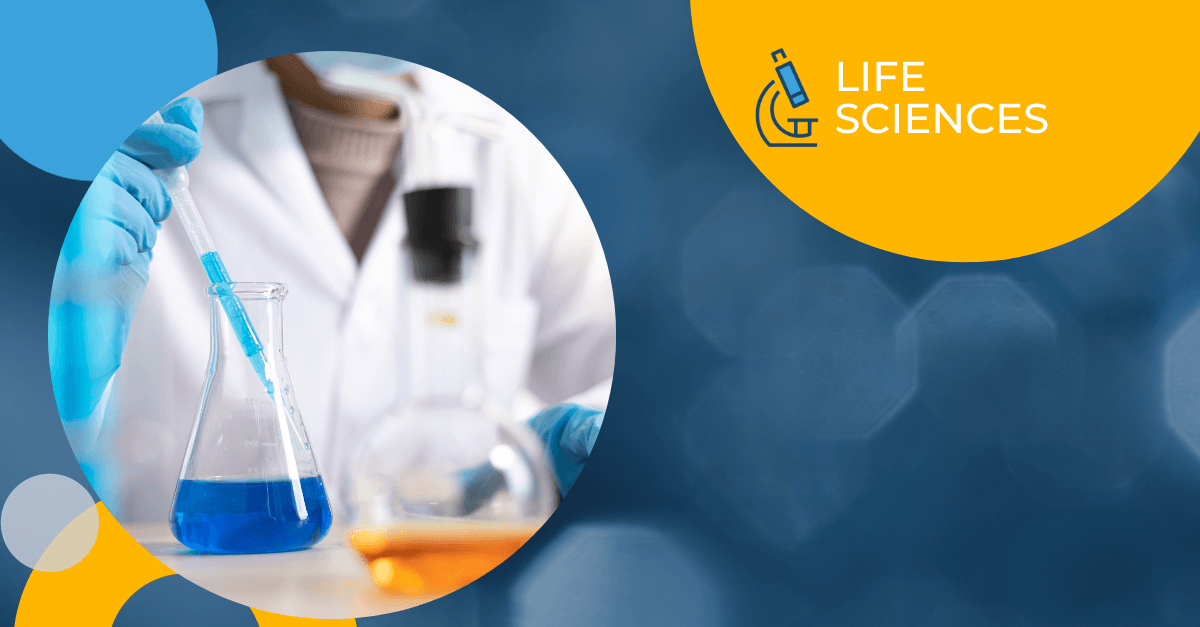
Clinical trials are the backbone of the medical industry, providing valuable insights into the safety and efficacy of new medical treatments and therapies. However, a significant problem continues to hinder clinical trial progress – the lack of diversity among trial participants. This issue has critical implications for public health and the effectiveness of medical treatments. In this blog post, we will delve into the problem of diversity in clinical trials and highlight the role clinical trial translation plays in addressing this issue.
The Pervasive Lack of Diversity
The lack of diversity in clinical trials is not a minor issue; it is a systemic and deeply rooted problem that continues to plague the field of medical research. Clinical trials serve as the foundation for evaluating the safety and efficacy of new medical treatments and therapies. To draw accurate and meaningful conclusions from these trials, it is crucial that the participants reflect the real-world patient population who will eventually benefit from these medical products.
However, the reality is often far from this ideal. A stark underrepresentation of people from racial and ethnic minorities and other diverse groups is a prevalent and profoundly concerning issue in clinical research. These underrepresented populations include African Americans, Latinos, Indigenous peoples, LGBTQ+ individuals, and more. The consequence of this underrepresentation is twofold: it hinders health equity and limits our understanding of how medical treatments affect diverse populations.
Beyond Race and Ethnicity
While racial and ethnic diversity is a critical aspect of representation in clinical trials, it is not the sole dimension to consider. Other factors, such as age and gender, also play significant roles in how patients respond to medications and medical interventions. Clinical trial participants should span a wide range of ages, from the young to the elderly, as age-related factors can influence treatment outcomes. Likewise, gender diversity is crucial because certain medical conditions and treatments may affect individuals of different genders differently.
Imperative for Health Equity
The quest for health equity is a driving force behind the push for diversity in clinical trials. Health equity means that every individual has the same opportunity to attain the highest level of health, regardless of their background or identity. Achieving health equity requires addressing and eliminating healthcare access, outcomes, and experiences disparities.
Clinical trials are a crucial arena where health equity can be advanced. By ensuring that diverse populations are adequately represented in trials, we can gather data that is more reflective of real-world scenarios. This, in turn, allows healthcare providers to make more informed decisions about treatment strategies and ensures that medical products are safe and effective for everyone, regardless of their racial or ethnic background, age, or gender.
The Knowledge Gap
The lack of diversity in clinical trials also creates a knowledge gap. When clinical trial populations do not accurately represent the broader population, our understanding of how medical treatments work can be incomplete or biased. This knowledge gap can lead to disparities in healthcare, as treatments may not be optimized for all patient groups.
For example, a medication that works exceptionally well for one ethnic group may have a different response in another due to genetic variations or other factors. Without diverse representation in clinical trials, such differences may go unnoticed, and potentially life-saving treatments might not be tailored to the unique needs of specific populations.
The diversity gap in clinical trials is not merely a statistical issue; it has far-reaching implications for health equity and our ability to provide optimal healthcare to all individuals. Recognizing the importance of diversity in clinical research and taking proactive steps to ensure full representation is imperative for advancing medical science and promoting equitable healthcare access and outcomes for everyone.
Improving Clinical Trial Diversity and Health Equity Through Translation
One of the critical ways to make clinical trials more inclusive is through translation. Having translated materials, as well as offering interpreters throughout the clinical trial process, can significantly improve communication, a patient’s experience, and the likelihood of retaining them throughout the duration of your clinical trial. Here are eight ways in which translated materials play a vital role in patient recruitment and retention:
- Inclusivity and Access: Translation ensures that patients who speak languages other than the trial’s primary language can access and understand essential information. This inclusivity is vital for reaching a diverse participant pool and avoiding exclusion based on language proficiency.
- Informed Decision-Making: Clinical trial participation is a significant decision for any patient. Translated materials empower patients to make informed choices by providing them with clear and comprehensive information about the trial, its purpose, procedures, potential risks, and benefits.
- Ethical Considerations: Informed consent is a fundamental ethical requirement for clinical trials. Translations of informed consent forms and other trial documents are essential to ensure that participants fully understand their consent, promoting ethical standards and voluntary participation.
- Comprehension and Compliance: Complex medical information can be challenging to understand, especially when presented in a language in which patients are not proficient. Translations simplify this information, improving comprehension and adherence to trial protocols and treatment regimens.
- Patient Retention: Maintaining patient engagement and trust is crucial throughout the patient journey. Translated materials and support through interpreters enhance the overall patient experience, reducing misunderstandings and fostering a sense of inclusivity, which can lead to improved patient retention.
- Data Quality: Clear communication, facilitated by translations, results in more accurate data collection. When participants understand trial instructions and reporting requirements, they are more likely to provide reliable and consistent data, enhancing the quality of the trial’s results.
- Cultural Sensitivity: Translations go beyond words; they consider cultural nuances and sensitivities. This cultural relevance ensures that materials align with the target audience’s culture, promoting trust and understanding among participants from diverse backgrounds.
Translation goes beyond word-for-word conversion; it must accurately convey cultural intricacies. Clinical trial organizers can build trust and engagement among diverse populations by developing culturally sensitive communication materials.
- Reduced Dropout Rates: Clinical trial participants often have questions and concerns. To address this, sponsors should offer easily accessible support in multiple languages. This includes frequently asked question pages, translated documentation, and live support with human interpreters to accommodate potential participants researching trials outside of regular business hours. Patients who feel supported and informed are less likely to drop out of clinical trials prematurely. Translated materials and language support contribute to a positive patient experience, reducing dropout rates and increasing the trial’s chances of success.
Having translated materials throughout the patient journey of a clinical trial is essential for ensuring inclusivity, promoting ethical standards, improving patient comprehension and compliance, enhancing data quality, and ultimately, contributing to the success of the trial while advancing health equity.
Morningside: Your Trusted Partner for Clinical Trial Translation
Morningside is a leader in providing language solutions for clinical trials, with over 20 years of experience working with the world’s largest pharmaceutical companies and CROs. Our expertise covers a wide range of therapeutic areas, and we are committed to delivering high-quality translations that meet the industry’s rigorous standards.
Our linguists are rigorously vetted and possess deep subject matter expertise, ensuring accurate and culturally relevant translations. We also adhere to ISO 13485 and 17001 compliant processes and employ a 3-tier linguistic review process to maintain the highest quality standards. While also leveraging industry-leading technologies to enhance translation quality, decrease turnaround times, and control costs.
In conclusion, addressing the lack of diversity in clinical trials is an urgent and essential endeavor for the advancement of medical research and health equity. Translation plays a pivotal role in making clinical trials more inclusive and accessible to diverse populations. Download our new whitepaper discussing the role Translation plays in Patient Recruitment and Retention to learn more. By partnering with experienced language service providers like Morningside, clinical trial organizers can ensure that language and cultural barriers are effectively addressed, ultimately leading to more representative and impactful research outcomes.
About Morningside, a Questel Company
As clinical trials have become more international in scope, precise translations and rigorous quality controls have become even more essential. That’s why the world’s largest pharma companies and CROs choose Morningside, a Questel Company, to help them deliver better outcomes through reliable clinical document translation and linguistic validation services. Clients trust us to handle their most valuable data and mitigate risk for a wide range of clinical trial documents, from patient questionnaires to case report forms (CRFs). Our translators consistently deliver linguistically accurate, culturally adapted documents so our clients can deliver results.
Get the latest insights delivered to your inbox
Meeting MDR & IVDR Regulations: Translation & Cost-Savings
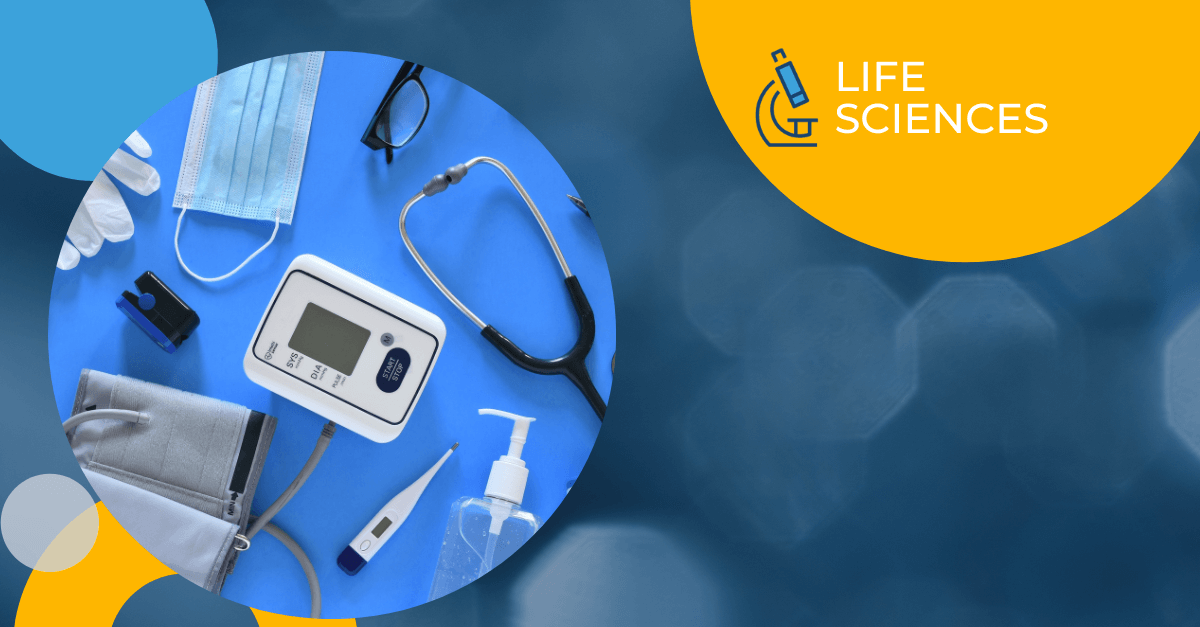
The ever-changing landscape of medical device (MDR) and in-vitro diagnostic medical device (IVDR) regulations provides a set of challenges to your organization.
Between MDR and IVDR amendments and changing implementation dates – it is a lot to keep up with and determine how to best keep your organization in compliance. Luckily, we have been following this process carefully so you can ensure your documentation complies with translation regulation updates and utilize best practices to take advantage of cost savings.
Clearing up the MDR Regulations and IVDR Amendments
On February 16, 2023, the European Parliament voted at first reading to amend the transitional provisions in regulation (EU) 2017/745 on MDR and Regulation (EU) 2017/746 on IVDR. The approved amendment will give medical device manufacturers additional time to bring their devices into conformity with the requirements foreseen in the regulations. It will also allow more time for notified bodies to conduct conformity assessment procedures in accordance with the regulations.
Understanding the Increased Translation Requirements
Compared to the previous medical device directives (93/42/EEC, 90/385/EEC and 98/79/EC), the new MDR and IVDR have stricter and more comprehensive requirements regarding the translation of medical devices and in-vitro diagnostic devices in the European Union (EU).
- Larger number of products require localized content
- More specified requirements
- Increased emphasis on safety
- Declaration of conformity
- New Summary of Safety (and Clinical) Performance Documentation
Considerations for Translations
Twenty-four official languages are required for translation, and their choice depends on the extent of a product’s presence in the EU. Working with a language service provider (LSP) specializing in regulatory submissions, packaging, labels, IFUs, manuals, and software provides the assurance needed for compliance.
Efficiency in both cost and time lies in comprehensive preparation for your translation process.
- Consider multi-language translation while creating English content
- Think about shared content between documents
- Standardize formats
- Use an LSP that is capable of fully benefiting from translation technologies
- Leverage translation memories for cost savings
MDR and IVDR Labeling Industry Expertise
Join Morningside on March 23 from 1 PM-2 PM as we partner with MDx CRO to speak about the challenges medical device organizations face in compliance with MDR and IVDR regulations, including translations. We will have two expert speakers from the regulatory and translation industries: Carlos Galamba, the co-founder of MDx CRO and Vice President for Diagnostics at RQM+ and our very own Anna Eisenberg, Associate Director of Life Science Business Development at Morningside, a Questel Company. They provide insights into existing rules’ latest amendments and cost-effective language translation approaches.
More about our Speakers
Carlos Galamba is a seasoned professional in the diagnostics industry with a wealth of experience in both consultancy and regulatory roles. He is the co-founder of MDx CRO and Vice President for Diagnostics at RQM+, one of the world’s largest consultancies fully dedicated to Medtech. In this role, he was responsible for the overall strategic direction and subject matter leadership for diagnostics. Carlos also spent 7 years at the Notified Body BSI, where he managed, coached, and developed a global team of IVD technical experts. He was BSI’s first in-house clinician for IVDs. He led the implementation of the BSI clinical oversight process, made hundreds of CE marking recommendations for IVDs and supported IVDR Notified Body designations. Prior to BSI, Carlos held roles at the UK competent authority, the MHRA, and was a lead scientist in the UK National Health System, specializing in transfusion and transplantation medicine. He played a key role in hospital and laboratory preparedness for emerging infectious diseases, including the Ebola crisis in 2014, when the first cases were detected in Europe.
Anna Eisenberg is an Associate Director of Life Science Business Development at Morningside, with 20+ years of experience in the localization industry and a focus on life sciences. She is responsible for the company’s life science strategy and relationships with global leaders. Anna expertly advises pharmaceutical and medical device companies on best translation practices and is an expert in implementing workflows that improve quality, reduce costs, and accelerate deadlines.
About Morningside
Morningside, a Questel Company, equips the world’s leading life sciences organizations with a full suite of end-to-end language solutions for their regulatory, clinical, commercial and patent needs. With over 4,000 clients in 55 countries, we’re globally recognized for our life science expertise and technology innovation across pharma, biotech, medical devices, and healthcare. Our life sciences translation services ensure your products and ideas seamlessly reach new markets and comply with all regulatory and cultural requirements through every stage of the product lifecycle — from patent to post-market.
We hope you can join us for our webinar “Meeting MDR & IVDR Regulations: Translation & Cost Savings” on March 23rd from 1 PM-2 PM est. If you cannot make that time, please feel free to register. We will be sharing the recorded webinar with all registrants post-event. Not only will this webinar help you save time, but you will help ensure compliance in your organization and build your reputation. You won’t want to miss out on this critical presentation for the medical device industry. Register today for free attendance!
Get the latest insights delivered to your inbox
How To Choose A Technical Documentation Translation Provider
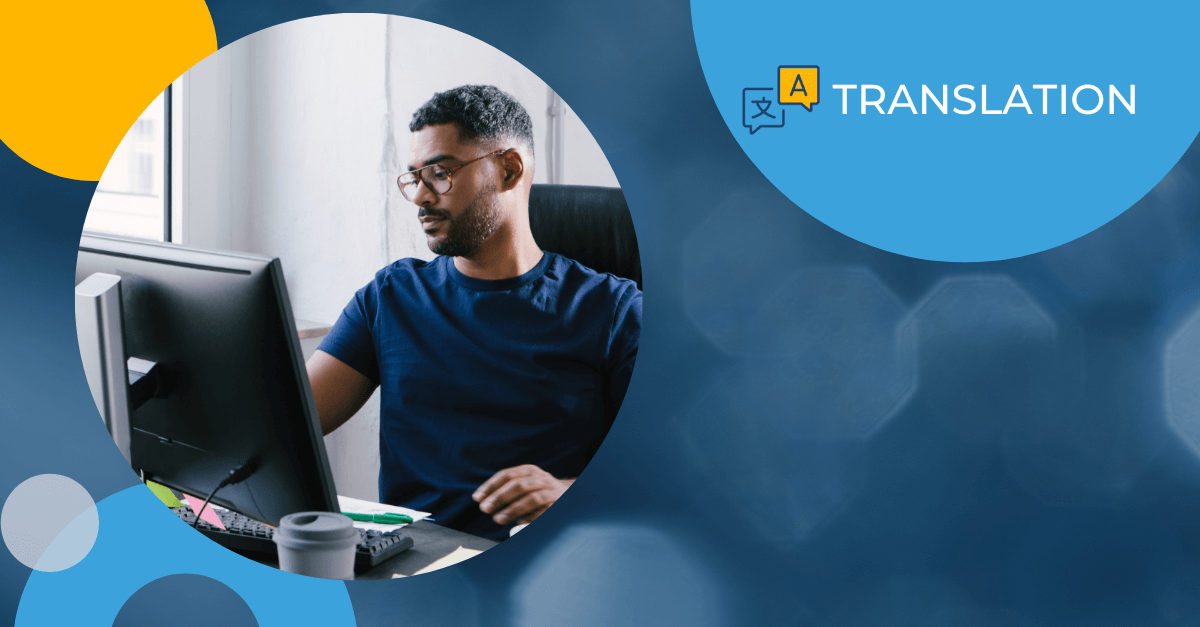
Whether you are selling a consumer good like air fryers or maybe a product as complex as medical equipment for the life sciences setting, then you likely provide technical documentation as a helpful resource for proper care and use. Technical documentation touches nearly every industry and is responsible for instructing, guiding, sharing, explaining or troubleshooting to help an end-user with a product or service. As an international organization preparing technical documentation for products or services, you must consider the impact of technical documentation translation.
Whether your organization is expanding into a new territory or releasing a new product in an already familiar market, high-quality and accurate technical documentation translation will be vital to communicate with your global market. This means an international brand will require all technical documentation to be translated into each of the different languages that support the various territories your product or service appears.
The Big Dilemma
Where many organizations run into questions or require more intensive and intentional support is choosing a proper language service provider (LSP) for expert translation. It is not a minor decision, as selecting the right LSP for the job requires considering several elements to properly assess an LSP for your technical documentation translation, including quality, cost, and turnaround time. The goal, of course, is to ascertain which partner can provide the best quality translation in the fastest time at a reasonable price.
Without considering every element, your organization could be subject to translation mishaps. An LSP that promises inexpensive and quick translation may not employ the most stringent quality standards. Or, on the other end of the spectrum, an LSP that employs intensive processes may have a turnaround time that is too slow to meet your project deadline.
Technical documentation, and honestly, anything with your organization’s name or logo on it, represents your organization, therefore it should uphold your reputation, strengthening your international presence and accessibility while meeting all of your project needs. Equal thought and consideration must go into both the source and target language. Whether or not translations are required by regulation, they are typically necessary for the user experience, and high-quality translations are essential.
A Helpful Tool: Technical Documentation Translation Ultimate White Paper
With that in mind, we have developed an extensive white paper to support your selection of a professional LSP, as not all LSPs are made equally. Our white paper will help you find an LSP that employs rigorous standards and translators with expertise in your industry and subject matter. This resource’s goal is to help ensure that your translations will always be as effective as the source version, delivered on time and at a manageable cost.
Our new white paper, “The Ultimate White Paper: Choosing a Reliable Translation Partner for Technical Documentation,” covers the following:
- The importance of technical documentation
- If you should translate your technical documents
- Recommended qualifications for translators
- Translation process and tools to an expert from your language services provider
- The importance quality plays in technical documents
Choosing a suitable LSP is a crucial step in communicating with international markets. With the help of this white paper, you can approach skilled technical documentation translation companies with experience in the field most relevant to you and meet all of the standards you require. The right LSP for you will be able to consider many factors that will impact the success of your technical documentation translation project, such as cultural nuances, industry-specific technical terms, the local dialect, formatting and styling.
The Core Objective of Handling Technical Documentation Translation
When handling technical documentation translation, the core objective is accurately converting the information from one language to another — presenting everything in an easy-to-read and usable format in each target language. Best practices necessitate professional technical document translation partners with subject-matter expertise, language expertise, and experience in authoring tools. Doing so can help guarantee that translations appropriately convey all intended meanings in the proper format.
Any professional LSP should be able to handle various kinds of technical documentation translation. Our white paper will help you look for someone who can manage all your documentation to reduce costs. Whomever you partner with for your technical translations should be upfront about their commitment to quality and the tools they employ to reduce turnaround time and save the bank.
This white paper covers independent audits an LSP should use for quality systems to rigorously vet their subject matter experts and translators, such as ISO 9001, 13485 and 17001. When quality is a primary focus for translation projects, it helps ensure accuracy and smooth implementation from initial requests through on-time delivery. Our ultimate white paper will ensure you understand the importance of these factors and that you can consider them thoroughly.
Best practices recommend using an LSP with translator certification and accreditation to ensure a high level of professional experience. Ask if your language services partner can provide translators who specialize in your specific area of need. The more specialized the translator, the more likely you will receive the highest quality localized product.
And lastly, centralizing your technical documentation translation projects with a single provider has several critical benefits. Controlling the number of translation providers you engage with delivers higher levels of consistency across all your translated documents throughout the countries where you operate. Ultimately, centralizing your translation projects is in your best interest because using disparate vendors can create information silos that lead to inconsistencies, elevated costs, and redundancies.
Long-term relationships go beyond just understanding and anticipating your organization’s translation needs. Continual engagement with the same provider can deliver measurable cost- and time-saving benefits. Sophisticated tools like these provide greater consistency across translated materials while lowering costs and turnaround times as the amount of content requiring new translation drops.
An Expert Technical Documentation Translation Partner
At Morningside, we take pride in offering highly professional technical translation services to customers around the globe, and we’re here to assist you along the way. It’s never too early to prepare and plan for localization. How a document is written, and formatted will directly impact the time and money it takes to translate it. Contact us today to learn more about how you can save time and money with our ISO-compliant localization services. You can download our white paper now for choosing a reliable translation partner for technical documentation, or contact us today get started on your next project.
About Morningside
Morningside, a Questel Company, equips leading organizations with accurate, high-quality, professional translation services. We specialize in highly regulated industries, including legal, life sciences, corporate compliance and IP. We help your ideas reach new markets and audiences while allowing you to do more with your budget. Our global network of 8,000+ vetted translators includes subject matter experts (SMEs) in various technical fields and practice areas. Morningside is supported by industry-leading technology and a quality management system certified to the latest ISO 9001, 13485 and 17100 standards. We translate complex materials into 200+ languages for Global 500 companies, international law firms, and regulatory bodies.
Get the latest insights delivered to your inbox
Medical Device Labeling: Are you prepared for upcoming labeling request?

Whether it is your first time or your tenth time, handling medical device labeling can be a cumbersome process. With constant regulatory changes, new challenges always face your team and sometimes you may feel lost.
Join Morningside on October 27 from 1pm-2pm EST, as we partner with Network Partners to speak about the challenges regulatory teams face in medical device labeling. Experts, Heather Valley and Anna Eisenberg, will provide critical information you will need to better understand labeling and prepare for submission.
From prioritizing the process, understanding basic requirements, and planning for translations, this one-hour-long webinar will cover the an extensive range of topics you will need to feel prepared for the next steps in your labeling process.
Prioritize your Process
The labeling process has many moving pieces. Not prioritizing it is often how organizations face risking the loss of money, time, and in worse cases, reputation. Planning early and speaking about your process will allow for ownership, accountability, planning/execution, and the elimination of silos.
With multiple departments and individuals involved in labeling, ownership and accountability are paramount in ensuring each step is completed properly along the way. We will discuss what a “good” labeling process looks like and dive into all the benefits you can gain from implementing practical and effective steps in your company.
Basics of Regulatory Requirements
Join us as our experts go over the basics of regulatory requirements that you need to know:
- Labeling
- Symbology
- Unique Device Identifiers
- E-labeling
Gain an understanding of what types of product literature fall under labeling. Learn about how symbology is used, such as standards, symbols, and even size and color. Take a look with us as we dive into what Unique Device Identifiers are, what goes into them, and how they are read. Then finally, we’ll explore e-labels and the challenges you can expect to face when using them.
Plan for Translations
Learn about the lasting benefits of working with an experienced life science language services provider (LSP). We’ll discuss how partnering with one LSP for all of your complex multi-language projects helps increase security, organizes workflow, saves time in compliance, and reduces costs.
Discover the advantages of working with a LSP that specializes in regulatory submissions, packaging, labels, IFUs, manuals, and software. As well as one that has experience working with regulatory bodies around the globe and the tools needed to let you meet compliance.
Medical Device Labeling Industry Expertise
We will have two expert speakers from the regulatory and translation industries: Heather Valley, Senior Director of Regulatory Affairs at Network Partners, and our very own Anna Eisenberg, Associate Director of Life Science Business Development at Morningside, a Questel Company.
Heather Valley is a Senior Director of Regulatory Affairs at Network Partners, a professional services firm that helps clients complete the work necessary to provide their products to patients. Serving the medical device, pharmaceutical and biopharmaceutical industries with core competencies in Regulatory Affairs, CER, Packaging Engineering, Labeling, Quality and Project Management.
Heather is passionate about “working smarter, not harder”. She knows the challenges in the life science industry; with the constant changes, understands key issues, and their implications and takes the following steps to get clients on the path to compliance while getting their products to the patients that need them most.
Anna Eisenberg is an Associate Director of Life Science Business Development at Morningside, with 20+ years of experience in the localization industry and a focus on life sciences. She is responsible for the company’s life science strategy and maintaining relationships with global leaders in the field. Anna expertly advises pharmaceutical and medical device companies on best translation practices and is an expert in implementing workflows that improve quality, reduce costs, and accelerate deadlines.
About Morningside
Morningside, a Questel Company equips the world’s leading life sciences organizations with a full suite of end-to-end language solutions for their regulatory, clinical, commercial and patent needs. With over 4,000 clients in 55 countries, we’re globally recognized for our life science expertise and technology innovation across pharma, biotech, medical devices, and healthcare. Our life sciences translation services ensure your products and ideas seamlessly reach new markets and comply with all regulatory and cultural requirements through every stage of the product lifecycle — from patent to post-market.
We hope you can join us for our webinar “Challenges and Changes in Regulatory Medical Device Labeling” on October 27th from 1PM-2PM est. If you cannot make that time, please feel free to register anyways, we will be sharing the recorded webinar with all registrants post-event. Not only will this webinar help you save time, but you will help ensure compliance in your organization and build your reputation. You won’t want to miss out on this critical presentation for the medical device industry. Register today for free attendance!
Get the latest insights delivered to your inbox
Translation Quality Standards – What Are They?
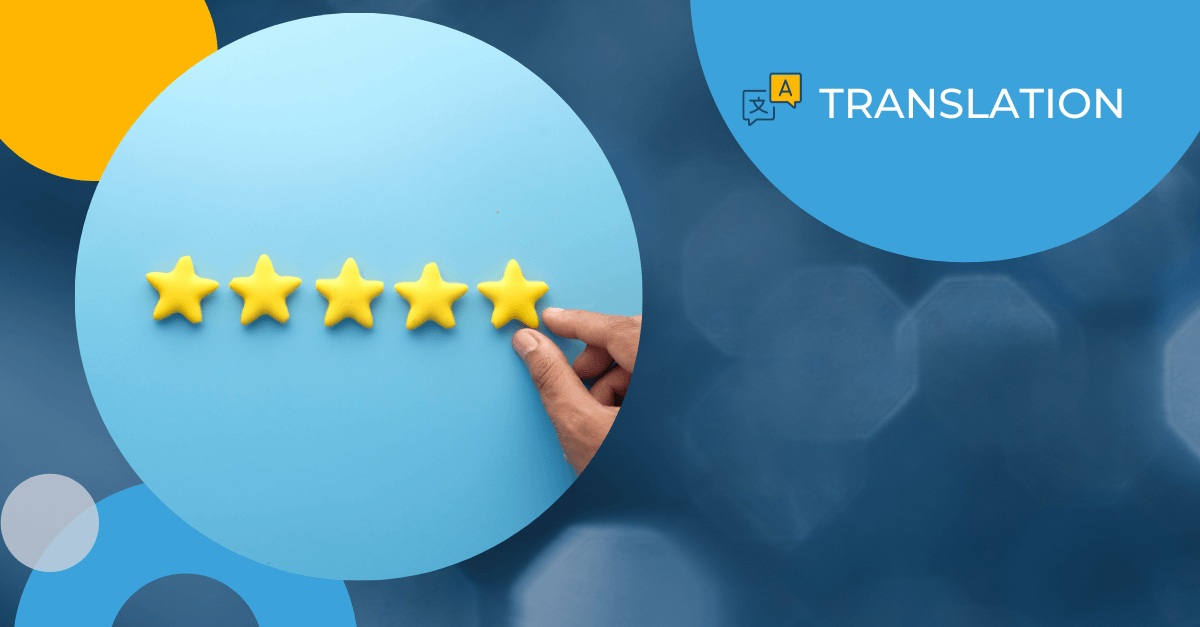
When beginning the process of partnering with a professional language services provider (LSP), you will hear a lot about the quality of translations provided – at least, you should. This leads to the question of what are translation quality standards.
According to the International Organization for Standardization (ISO), quality can be defined as “the totality of features and characteristics of a product or service that bears its ability to satisfy stated or implied needs.” In the case of translation, quality can be defined as the success of the translation in accurately capturing and conveying the information and intent of the source document.
Translation quality becomes mission-critical in domains such as medical, legal, accounting, technical documentation, and intellectual property (IP). Poor-quality translations could cause a loss of business value and, in some cases, even a loss of life.
What is an ISO Standard?
ISO standards set out various business processes and best practices internationally agreed upon by experts. ISO standards for translation quality focus on establishing and maintaining a process of translation, review and approval that, when followed diligently by qualified professionals, will consistently result in reliable, accurate translations and meet the requirements of the customer’s use case.
Two Examples of ISO Quality Standards
ISO 9001:2015 is the world’s most widely recognized quality management standard. ISO 9001 outlines ways to achieve consistent performance and service at all levels. Achieving this certification means a company has created a quality system with a framework for better customer satisfaction, staff motivation and continuous improvement.
ISO 17100:2015 is an international quality standard set precisely for the translation industry. It defines the requirements for the core processes, resources and other aspects necessary for delivering a quality translation service. Certification to ISO 17100 showcases a translation company’s high level of commitment to meeting client and industry requirements.
Industry-Specific Translation Quality Standards: A Medical Example
Some industries have specific translation quality needs that more generalized quality standards cannot meet. A good example is ISO 13485:2016, which specifies requirements for a quality management system. This standard requires an organization to demonstrate its ability to provide medical devices and related services, such as translation, that consistently meet customer and applicable regulatory requirements to remain compliant.
ISO 13485 can also be used by suppliers or external parties that provide products or services to such organizations. LSPs, like Morningside, certified to ISO 13485, collaborate with medical device companies to determine risk management for all medical device translations. With the LSP implementing processes that reduce the potential for product risks, the medical device company reduces its exposure to compliance and legal issues, not to mention the risk to customers.
International Standard for Security Management
ISO 27001:2013 is an extensive framework of requirements for “establishing, implementing, maintaining and continually improving an information security management system.” It ensures that business information is handled confidentially and securely and that appropriate care is taken to mitigate risks compromising client data integrity.
Morningside is the world’s first significant patent translation and filing company to obtain this certification. We are one of only a handful of LSPs to have achieved it. Achieving this prestigious certification is no small feat and demonstrates a complete commitment to client data, systems, and processes.
It’s all about the people and the process
Translation quality standards play an essential role, but they are no substitute for providing ongoing training and feedback to translators, as well as arming translators and editors with the necessary resources and information on the subject matter, the context in which the translation will be used, etc. Translation teams equipped with glossaries, style guides, support materials, and contextual information can produce a much higher quality translation than those just handed a text with no background.
About Morningside, A Questel Company
Morningside, a Questel Company equips the world’s leading organizations with accurate, high-quality, professional translation services. We specialize in highly regulated industries, including legal, life sciences, corporate compliance and IP. We help your ideas reach new markets and audiences while allowing you to do more with your budget. Our global network of 8,000+ vetted translators includes subject matter experts (SMEs) in various technical fields and practice areas. Morningside is supported by industry-leading technology and a quality management system certified to the latest ISO 9001, 13485 and 17100 standards. We translate complex materials into 200+ languages for Global 500 companies, international law firms, and regulatory bodies.
Get the latest insights delivered to your inbox
Best Practices: Translating Medical Device Labeling
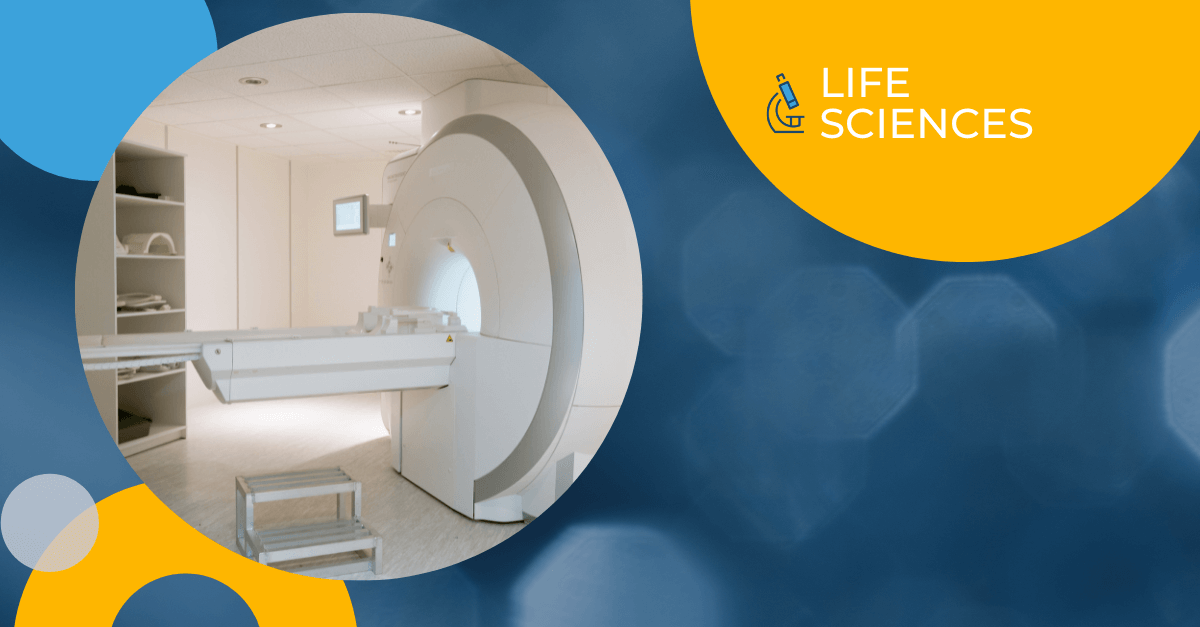
If you’re a medical device manufacturer with plans to distribute your products abroad, you need to be prepared to meet many different labeling requirements around the globe. Failure to do so can mean that your product is denied entry to a new market, or it can even cause dire, adverse consequences for your end-users. This means translating medical device labeling will need to be one of your top concerns.
Translating medical device labeling is either an absolute requirement to sell your product in a specific region or a critical step in minimizing risk and liability. Given the nature of the content, medical translations shouldn’t be done by just anyone. These documents are highly technical and require scientific knowledge and expertise that even most gifted translators don’t possess.
Translating labels requires a unique specialization and an experienced language services provider (LSP) in the subject matter and specific therapeutic area. There is zero tolerance for errors because they can present a potential patient hazard. It is imperative to take great care when writing, translating, and to submit translated medical device labels or other localized medical documentation.
Bringing a medical device to market is difficult enough without the added regulatory hurdles requiring translation. Labeling is a multi-stage process that involves translation, revision, and quality checks from an independent resource. Working with an LSP is the only way to ensure that you meet all the necessary regulatory requirements, translate into the appropriate languages, and provide high-quality, consistent translations.
Labels and instructions must be translated into dozens of languages and that can present a significant medical translation expense for life sciences companies. To help you get the most out of your translation process, we have created helpful best practices to ensure your translation is error-free to facilitate help with bringing your medical device to market.
Download our new eBook to learn about:
- Types of Labeling
- Implementing Best Practices
- Benefits of using an LSP & What to Look for In an LSP
The international medical industry is highly regulated. It is best to ensure all documentation is prepared for governing bodies worldwide, such as FDA, EMA, CFDA, SFDA, and the PMDA, so work with an LSP, like Morningside, specializing in medical translation.
Implementing an international labeling strategy is crucial to the successful testing, launch, and commercialization of any medical product. Our complimentary eBook’s rules and best practices help facilitate a comprehensive compliance process to bring your product to market while mitigating risk and supporting expedited approval.
The patient hazard associated with labeling medical devices demands a strong emphasis on translation accuracy and quality. The details matter, and mistakes can be costly. Please do not go to market without reading our eBook first.
For more information on medical document translation and to plan your international label strategy, contact us.
About Us
At Morningside, we’ve been providing high-quality medical translation services for over 20 years, and we have obtained all three of the critical ISO certifications described above. Our quality assurance process includes many layers of controls, including editing and proofing with built-in redundancies.
Get the latest insights delivered to your inbox
Getting More than the “Gist” Right: How to Achieve Quality Medical Document Translations
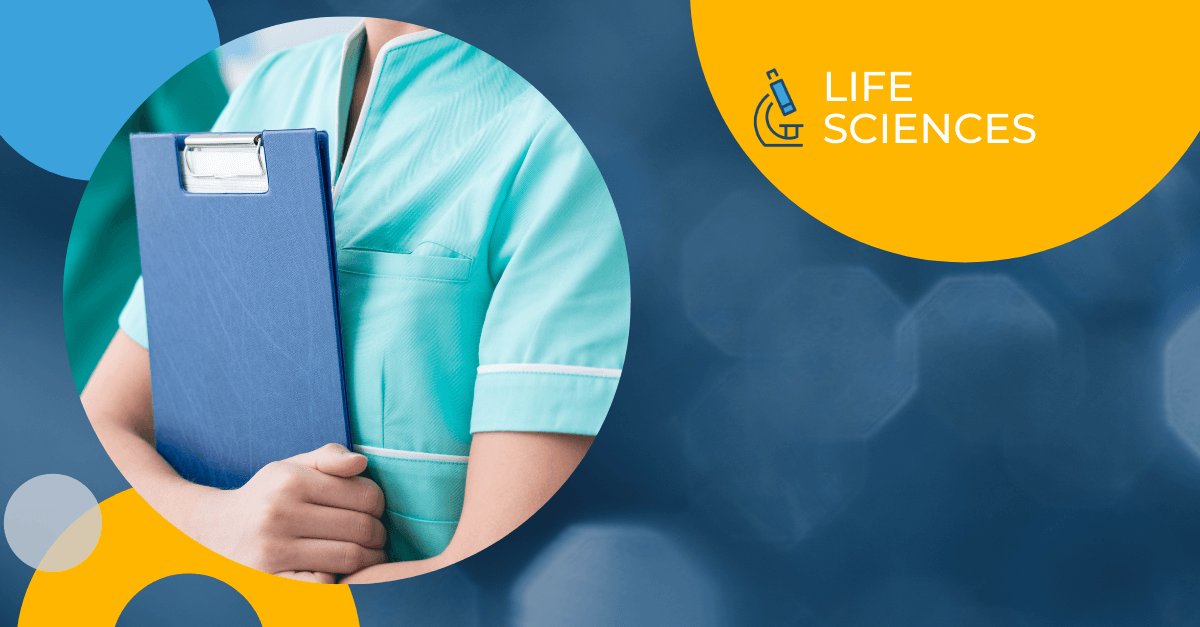
Quality translation involves more than “one-to-one” direct translations of individual words or phrases.
Understanding and incorporating nuance, ensuring cultural idioms retain their meaning, and conveying tone are all part of successful translation projects. However, in life sciences – particularly medical document translation – there is much less room for interpretation.
The stakes are higher for clinical trial documents, product inserts, drug labels, and medical instructions for use. Inaccurate translations can create devastating consequences for life sciences companies and the patients and medical professionals they serve. Accurate medical document translation is not a bonus – it’s a requirement.
Here’s how to improve your odds of achieving accurate translations from the outset.
Check for ISO Certifications
One way to quickly assess your translation company’s commitment to quality is to see if they are certified to the latest relevant ISO certifications. For example, ISO 17100:2015 relates specifically to the delivery of quality translation services, while ISO 13485:2016 applies to medical device companies and their suppliers. The ISO 13485 certification is only awarded to companies that have successfully implemented a quality management system that meets the medical device industry’s regulatory requirements. Translation companies with these certifications have already established detailed processes for achieving and maintaining an elevated standard of accuracy.
Ask for linguist credentials
Ask your translation company to supply you with the professional history and experience of the linguists they plan to assign to your project. If possible, request linguists who possess verifiable experience providing medical document translation services. It’s even better if you can confirm that they also have experience working in your specific field (e.g. medical devices, pharmaceuticals, etc.)
To further promote accuracy, you should request to work with linguists who possess special therapeutic experience related to your materials (e.g. diabetes, heart disease, prosthetics).
At Morningside, we take accuracy extremely seriously. Protecting our clients against liability or compliance violations are among our top priorities.
Never compromise accuracy in pursuit of speed
Unlike other translation projects, quality medical document translation cannot – and should not – be rushed. Ensuring accuracy requires:
- reviewing materials multiple times (by more than one linguist)
- checking for correct formatting
- making sure the layout never changes the meaning
- confirming translated materials meet all in-country regulatory requirements
We advise against dividing work between multiple translation companies as a means of achieving a faster turnaround. Doing so increases the potential for inaccuracy and can compromise consistency.
Instead, work with a single provider – and keep them in the loop. Advise them on upcoming projects. Provide specific details about project type, anticipated length, and details regarding the documents’ end-use. Knowing this information early on will help your translation company assign the most qualified individuals and establish an appropriate timeline for the job.
Keep in mind: If your translation company pushes back against a rushed timeline for a medical document translation project, it’s a sign they are looking out for you. Quality translation companies are not willing to risk your reputation – or theirs – by accelerating the process for such essential information.
Beware of low-cost providers
For many translation projects, price and turnaround time are usually the two most significant considerations. However, the single most important factor in medical document translation is accuracy. Because the stakes are so high (in some cases, life-or-death), accuracy is non-negotiable.
Therefore, because medical document translation accuracy is so closely tied to time spent by many individuals, there are very few (if any) options to cut corners. Your translation company may be able to supply some budget-trimming suggestions such as using Translation Memory tools or client glossaries, but if a translation bid comes in extremely low for a medical document project, the company may be taking unnecessary risks or bypassing necessary steps to produce the deliverables that you need (e.g. skipping extra review or excluding your images).
Read more: The human factor in medical document translation.
Remember what’s at stake
While translation accuracy is always necessary, other industries have a higher tolerance for ambiguity. Medical documents are held to a higher standard. There is no room for ambiguity or error.
In addition to the potential for harm to end-users, poor quality medical document translations can create other serious consequences for businesses. Some adverse outcomes include compliance violations, rejection by regulators, lawsuits from end-users, reputation-harming negative publicity, or expensive packaging/label/insert re-printing.
Obtaining meticulous medical document translations is about more than making information clear: it’s about shielding your end-users from harm and protecting your business from avoidable exposure.
Contact us to discuss how our proven life sciences translation services can help your company.
Get the latest insights delivered to your inbox
The Human Factor in Medical Document Translation

Translation accuracy is essential for almost all materials, but life sciences translations have increased potential for life-or-death outcomes, leaving no room for error. Although machine translation technologies have improved significantly in recent years, there is no substitute for human involvement in demanding applications like medical document translation.
Medical Documentation Translation Types and Uses
If there is a wide range of materials, machine-powered translation tools can quickly process large volumes of information to obtain the general meaning of a piece of content. Machine translation may be adequate for general materials like internal company communications.
However, most life sciences translation projects feature specific information that must be translated correctly and consistently or risk harm to patients or increased liability for the company. Such as,
- Informed consent forms
- instructions for use
- drug labels
- clinical trial documentation
- medical devices
- pharma applications
- hospital/clinic documents
- or other applied healthcare settings
These are all examples where medical documents require scrutiny by experienced human translators.
With medical content full of specific terminology, it is critical to establish terms for translators and reviewers to use. Using the correct language is an essential part of producing high-quality translations.
Linguist Subject Matter Expertise
Linguists involved in medical document translation projects should possess specific expertise in the field. At Morningside, we only hire experienced translators who can demonstrate a proven medical translation background. Many of our linguists possess more than medical translation expertise – some have worked directly in healthcare or were formally educated in the medical field. This level of specialized skill ensures that the linguists we assign to life sciences translations already possess deep knowledge of the project’s subject, context, and nuances.
Sometimes linguists with experience in specific therapeutic areas can be critical to a medical translation project. Translators with experience related to a particular type or category of disease or condition (ex., cardiology, Alzheimer’s Disease, diabetes, etc.) play an essential role in ensuring correct translation.
Ask about your translation partner’s quality management process
Every translation company has a different quality management process. To minimize risk and nonconformances in your final product, inquire about their approach before you engage. A good translation partner should be able to outline their process clearly. Here are some questions to ask:
- How much experience do you require for linguists?
- Do your translators possess any ancillary life sciences experience (ex. medical professional experience, life sciences degree, etc.)?
- How many translators will review each document?
- Do you use termbases/glossaries/other Translation Memory tools?
Meeting ISO Standards
Industry certifications further demonstrate controls to promote translation accuracy. ISO standards set out various business processes and best practices internationally agreed upon by experts. ISO standards for translation quality focus on establishing and maintaining a process of translation, review and approval that, when followed diligently by qualified professionals, will consistently result in reliable, accurate translations and meet the requirements of the customer’s use case.
ISO 17100 is an international quality standard set precisely for the translation industry. It defines the requirements for the core processes, resources and other aspects necessary for delivering a quality translation service. Certification to ISO 17100 showcases a translation company’s level of commitment to meeting client and industry requirements.
While ISO 13485 applies to quality management systems for medical device companies. It specifies requirements for a quality management system which requires an organization to demonstrate its ability to provide medical devices and related services, such as translation, that consistently meet customer and applicable regulatory requirements to remain compliant.
Morningside holds the above certifications and ISO 27100, which ensures Information Security – a critical designation when protecting valuable IP in life sciences. These certifications demonstrate the comprehensive quality protocols we maintain to support our human linguists.
Regulatory Expertise
In addition to experience in the specific aspect of the medical field or final application, linguists may also possess specialized regulatory knowledge essential for successful medical document translation.
Each country’s ministry of health is responsible for establishing language requirements for packaging, inserts, instructions for use, and more. In-country linguists familiar with local regulatory practices and requirements provide additional protection against language inaccuracies that could result in censure or require expensive re-printing.
It’s also common for medical document translation projects to include an In-Country Review (ICR) cycle, where the customer’s in-country teams review the content against their company’s style and branding guidelines, as well as for accuracy and regulatory compliance.
Peer Review and Correct Formatting
Due to the complex requirements of life sciences, medical document translation requires a minimum of two experienced linguists, often more. As a baseline, Morningside assigns at least one translator and one editor to each medical translation project.
We implement additional quality steps like linguistic review in-context and formal layout for more critical content such as CRO clinical trial documents.
Format-heavy applications, such as labeling, packaging, instructions for use, and medical device inserts, incorporate additional QA steps. We review language and layout, ensuring no information is cropped out or formatted in a way that may confuse or mislead end users.
Our team’s expertise with graphic design, technical authoring, and eLearning applications ensures a complete turnkey service solution for our clients. Though desktop publishing tools are an integral part of the document translation process, technology alone cannot guarantee that information is complete and correct. This is a skill that human translators can only perform.
Revealing Errors in Source Text
Human translators can also play a valuable role in identifying mistakes in the source text with potentially adverse consequences. For example, if the source text incorrectly reads “used test strip” instead of “unused” test strip, the translations will also be incorrect. Because there was no spelling or grammatical error in the text, a machine would likely overlook the mistake. Only a human translator could recognize the original text’s typo through the context of the material.
Spotting errors in the source text allows the company to make swift corrections before the incorrect text is translated into multiple languages.
Work with Experienced Medical Document Translators
When selecting the right translation company for your project, always opt for a partner with specific, verifiable experience in medical translation. Some companies offer medical document translation services but possess little practical experience in this highly specialized subset of translation services. There is no room for error or inaccuracy when the stakes are this high. Choose a translation company that genuinely understands the final end-use for each document.
Want to know more about what sets our medical document translation process apart? Contact Morningside today, and we’ll show you how we’re different.
About Morningside
Morningside, a Questel Company equips the world’s leading life sciences organizations with a full suite of end-to-end language solutions for their regulatory, clinical, commercial and patent needs. With over 4,000 clients in 55 countries, we’re globally recognized for our life science expertise and technology innovation across pharma, biotech, medical devices, and healthcare. Our life sciences translation services ensure your products and ideas seamlessly reach new markets and comply with all regulatory and cultural requirements through every stage of the product lifecycle — from patent to post-market.




